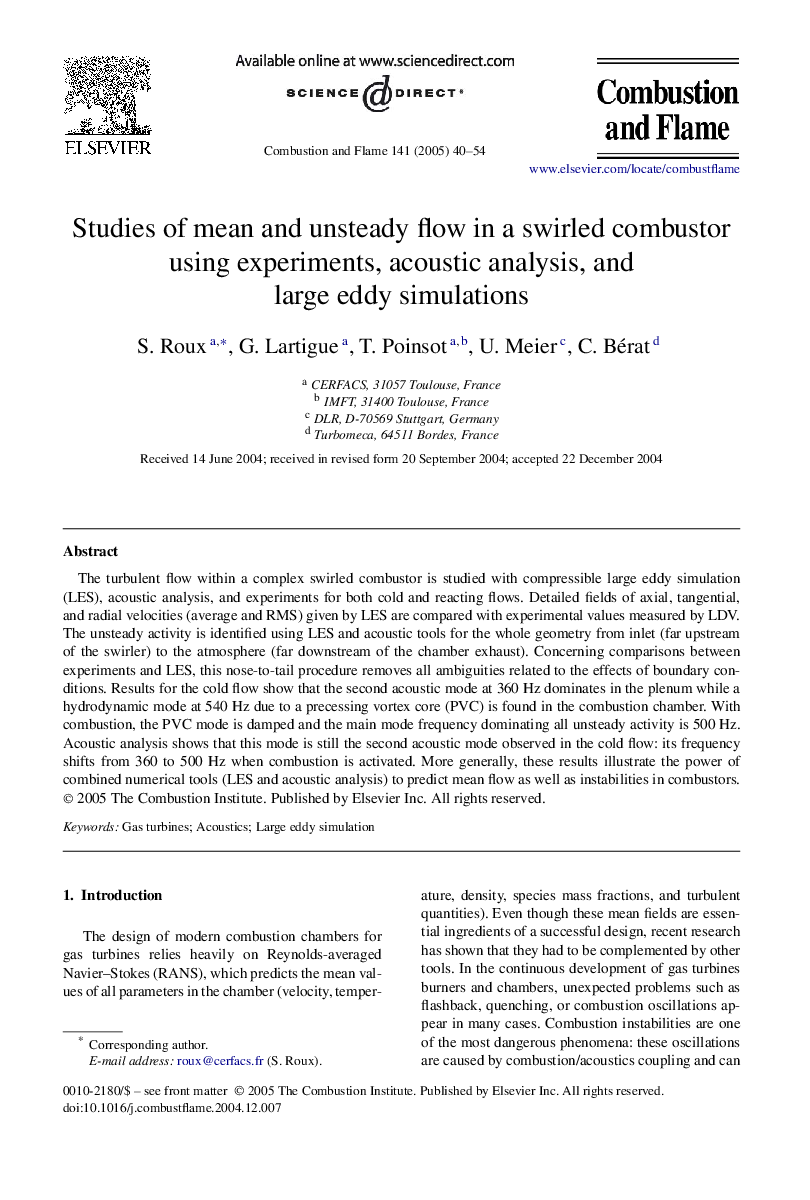| Article ID | Journal | Published Year | Pages | File Type |
|---|---|---|---|---|
| 9624518 | Combustion and Flame | 2005 | 15 Pages |
Abstract
The turbulent flow within a complex swirled combustor is studied with compressible large eddy simulation (LES), acoustic analysis, and experiments for both cold and reacting flows. Detailed fields of axial, tangential, and radial velocities (average and RMS) given by LES are compared with experimental values measured by LDV. The unsteady activity is identified using LES and acoustic tools for the whole geometry from inlet (far upstream of the swirler) to the atmosphere (far downstream of the chamber exhaust). Concerning comparisons between experiments and LES, this nose-to-tail procedure removes all ambiguities related to the effects of boundary conditions. Results for the cold flow show that the second acoustic mode at 360 Hz dominates in the plenum while a hydrodynamic mode at 540 Hz due to a precessing vortex core (PVC) is found in the combustion chamber. With combustion, the PVC mode is damped and the main mode frequency dominating all unsteady activity is 500 Hz. Acoustic analysis shows that this mode is still the second acoustic mode observed in the cold flow: its frequency shifts from 360 to 500 Hz when combustion is activated. More generally, these results illustrate the power of combined numerical tools (LES and acoustic analysis) to predict mean flow as well as instabilities in combustors.
Related Topics
Physical Sciences and Engineering
Chemical Engineering
Chemical Engineering (General)
Authors
S. Roux, G. Lartigue, T. Poinsot, U. Meier, C. Bérat,
